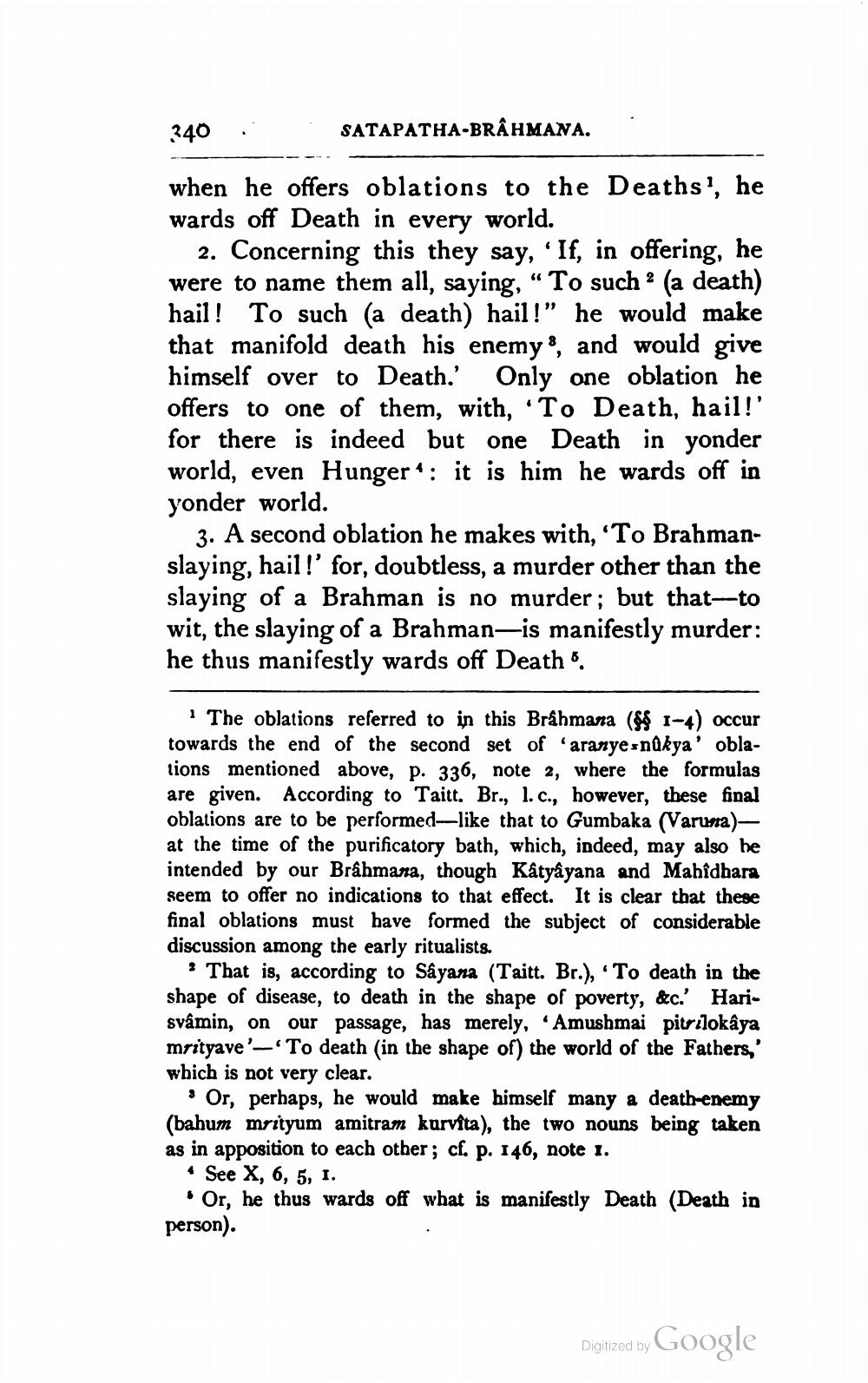________________
340
SATAPATHA-BRAHMANA.
when he offers oblations to the Deaths', he wards off Death in every world.
2. Concerning this they say, 'If, in offering, he were to name them all, saying, "To such ? (a death) hail! To such a death) hail!” he would make that manifold death his enemys, and would give himself over to Death. Only one oblation he offers to one of them, with, .To Death, hail!' for there is indeed but one Death in yonder world, even Hunger 4: it is him he wards off in yonder world.
3. A second oblation he makes with, ‘To Brahmanslaying, hail !' for, doubtless, a murder other than the slaying of a Brahman is no murder ; but that-to wit, the slaying of a Brahman-is manifestly murder: he thus manifestly wards off Death 6.
The oblations referred to in this Brahmana ($$ 1-4) occur towards the end of the second set of 'aranye snûkya' oblations mentioned above, p. 336, note 2, where the formulas are given. According to Taitt. Br., 1.c., however, these final oblations are to be performed—like that to Gumbaka (Varuna)at the time of the purificatory bath, which, indeed, may also he intended by our Brahmana, though Katyayana and Mahidhara seem to offer no indications to that effect. It is clear that these final oblations must have formed the subject of considerable discussion among the early ritualists.
· That is, according to Sâyana (Taitt. Br.). To death in the shape of disease, to death in the shape of poverty, &c. Harisvamin, on our passage, has merely, Amushmai pitrilokaya mrityave'-'To death in the shape of) the world of the Fathers, which is not very clear.
Or, perhaps, he would make himself many a death-enemy (bahum mrityum amitram kurvita), the two nouns being taken as in apposition to each other; cf. p. 146, note 1.
• See X, 6, 5, 1.
• Or, he thus wards off what is manifestly Death (Death in person).
Digitized by Google




